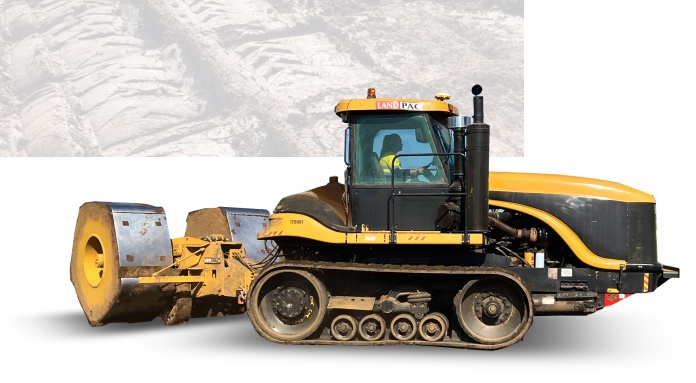
Landpac caters to large-scale infrastructure projects in a wide range of industries. High Energy Impact Compaction (HEIC) is fundamental to our work in establishing key infrastructure assets such as shipping terminals, airports, and other transport networks.
HEIC can make light work of land that other methods of compaction simply can’t touch – including reclaimed or otherwise inaccessible land – opening up new development and commercial opportunities.
5,381,881 km² of ground compacted
27 industries catered to
5 countries worked in
33,123,000 m3 of earth filled
91 clients collaborated with
139 projects delivered
And
counting!
The mining industry is the cluster of processes that are involved with extraction, management, and processing of naturally occurring solid minerals from the earth’s surface. Australia is the world’s largest producer of lithium and a global top five producer of gold, iron ore, lead, zinc, and nickel. It also has the world’s largest uranium and fourth-largest black coal resources, respectively.
Land rehabilitation is a process of restoration to bring an area of land back to its natural state after it has been damaged or degraded, making it safe for wildlife and flora as well as humans.
What is land rehabilitation after mining? The Mining Act 1992 defines rehabilitation as the treatment or management of disturbed land or water to establish a safe and stable environment.
Lack of knowledge, topography, soil conditions, high rainfall, high surface runoff, poor vegetation coverage, poor monitoring and evaluation, poor implementation and poor training on the technology use are major challenges encountering the land rehabilitation practices in an effective way.
Sport is an important part of life in Australia. It improves our physical and mental health, benefits the economy, and helps to strengthen our national pride and international relationships.
Australia’s forest industries support 80,000 direct jobs across the full industry value chain with an annual economic contribution of around $24 billion.
The petrochemical industry is an industry branch that produces organic intermediate products such as refinery products, natural gas, plastic, rubber, fibre raw materials.
The Australian energy industry encompasses all economic activity in relation to the generation, distribution and supply of electricity and gas to end users. The Australian electricity sector has been historically dominated by coal-fired power stations, but renewables are forming a rapidly growing fraction of supply.
Your compaction experts across Asia-Pacific
© Copyright Landpac 2025 —